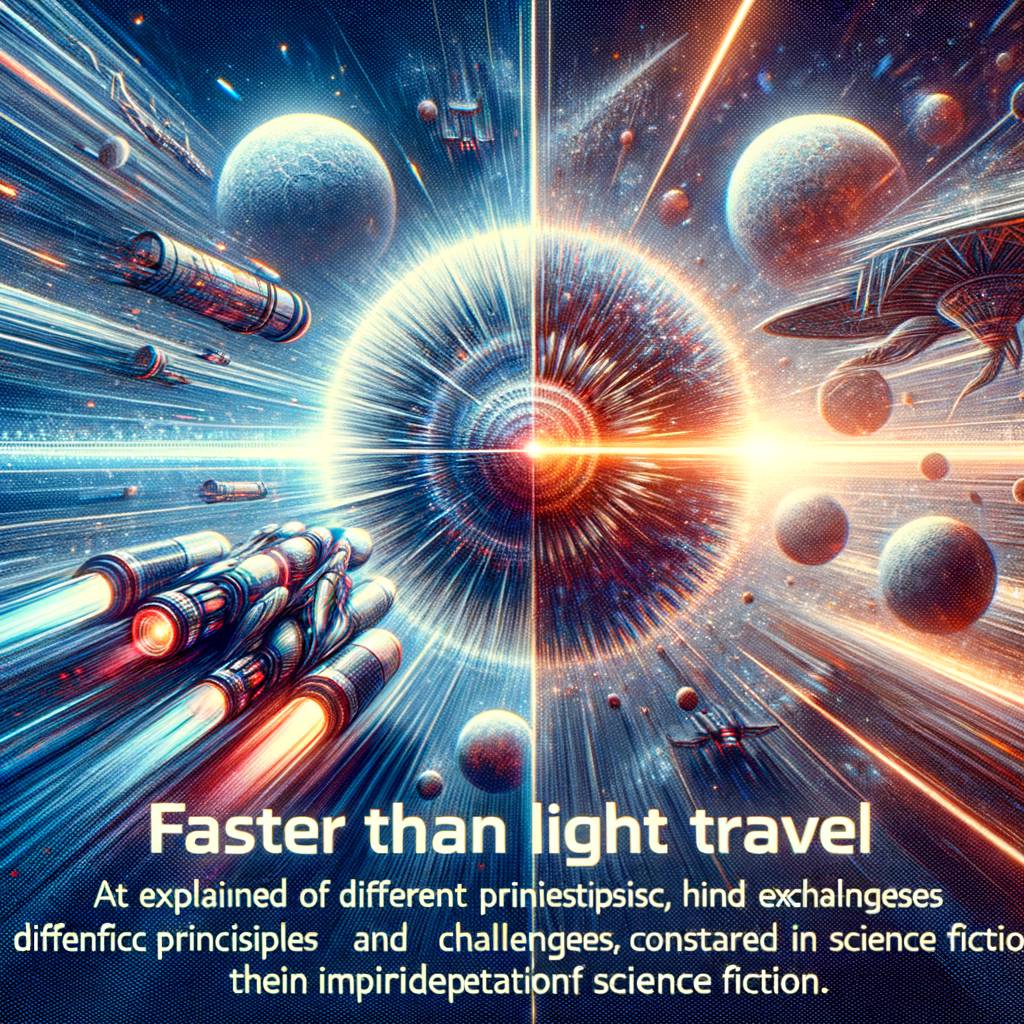Faster-than-light Travel: What does Science Say?

From the warp drives of Star Trek to the hyperdrives of Star Wars, faster-than-light (FTL) travel is a staple of science fiction. But what does actual science say about the possibility of such incredible speeds? Let’s delve into the various scientific approaches, hurdles, and principles surrounding FTL travel, and how science fiction has depicted and explained this fascinating concept.
The Science of FTL: Approaches and Hurdles
According to Einstein’s theory of relativity, nothing can travel faster than light in a vacuum, which travels at a speed of approximately 299,792 kilometers per second. This is because as an object with mass accelerates towards the speed of light, its relativistic mass increases until, at the speed of light, it becomes infinite. Infinite energy would be required to move this infinite mass, making FTL travel seemingly impossible.
However, scientists have proposed several theoretical concepts that could potentially allow for FTL travel. These include wormholes, Alcubierre drives, and quantum entanglement.
- Wormholes are hypothetical features of spacetime that could create shortcuts for long journeys across the universe. However, they are purely theoretical and have not been observed. Additionally, they may be unstable and collapse quickly, making travel through them potentially impossible.
- The Alcubierre drive is a speculative idea based on a solution of Einstein’s field equations in general relativity. It proposes a method of stretching space in a wave, causing the fabric of space ahead of a spacecraft to contract and the space behind it to expand. However, this would require negative energy, which has not been proven to exist.
- Quantum entanglement is a phenomenon where particles become interconnected and the state of one can instantly affect the state of the other, regardless of the distance between them. Some have proposed this as a method of FTL communication, but it cannot be used for FTL travel.
FTL in Science Fiction: Depictions and Explanations
Science fiction has long been fascinated with the concept of FTL travel, often using it as a plot device to allow for interstellar exploration and adventure. However, the explanations for FTL travel in science fiction are often based on speculative science or entirely fictional concepts.
In Star Trek, FTL travel is achieved through the use of a warp drive, which creates a warp bubble that distorts spacetime around the ship, allowing it to effectively travel faster than light. This is somewhat similar to the concept of the Alcubierre drive, although it is purely fictional.
In Star Wars, FTL travel is achieved through the use of a hyperdrive, which allows ships to enter an alternate dimension known as “hyperspace”. This is a completely fictional concept with no basis in real-world physics.
Other science fiction works, such as Orson Scott Card’s Ender’s Game, use the concept of relativistic travel, where a ship traveling at near-light speed experiences time more slowly than the outside universe. This is based on the real-world theory of relativity, but it is not true FTL travel.
Conclusion
While FTL travel is a fascinating concept and a staple of science fiction, current scientific understanding suggests that it is likely impossible. However, the exploration of theoretical concepts such as wormholes and Alcubierre drives continues to fuel our imagination and drive our exploration of the universe, both in science and in fiction.
As physicist and science fiction author Gregory Benford once said, “Science fiction is the literature of the scientifically possible.”1 While FTL travel may currently be beyond our reach, who knows what the future may hold?
1Benford, G. (1980). Timescape. Simon & Schuster.



